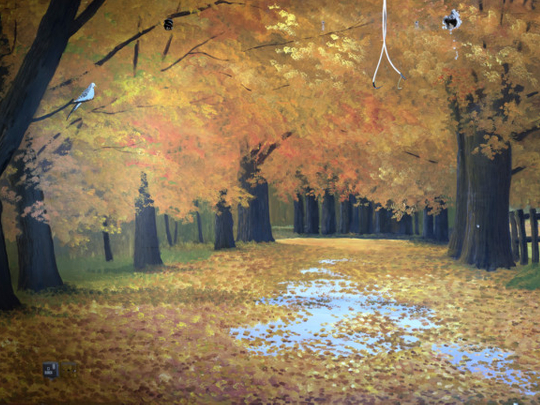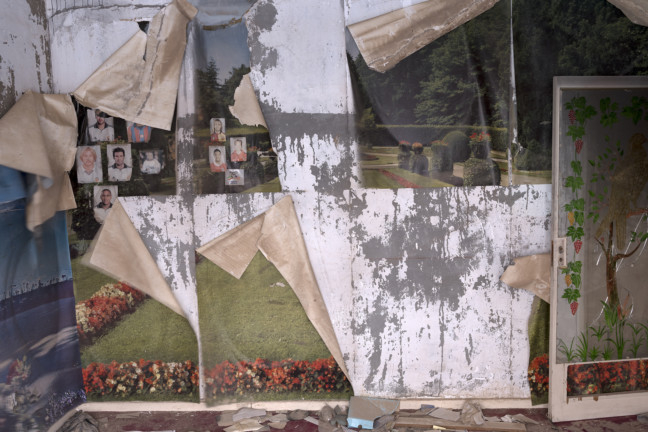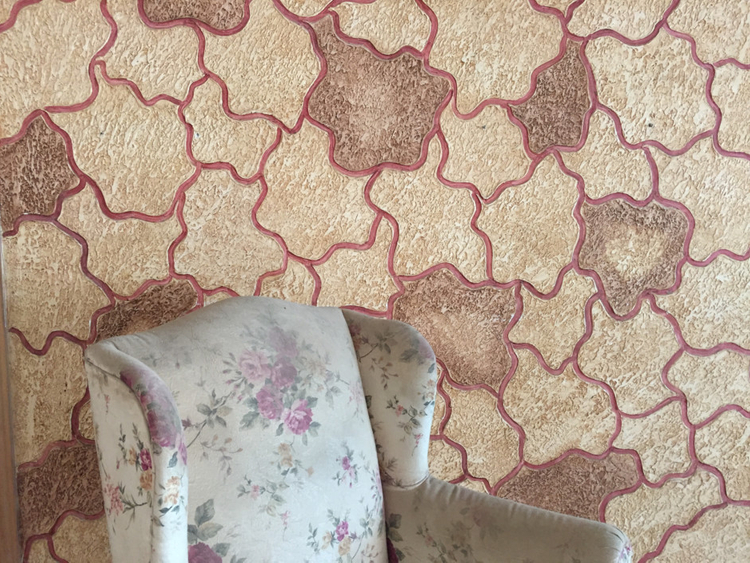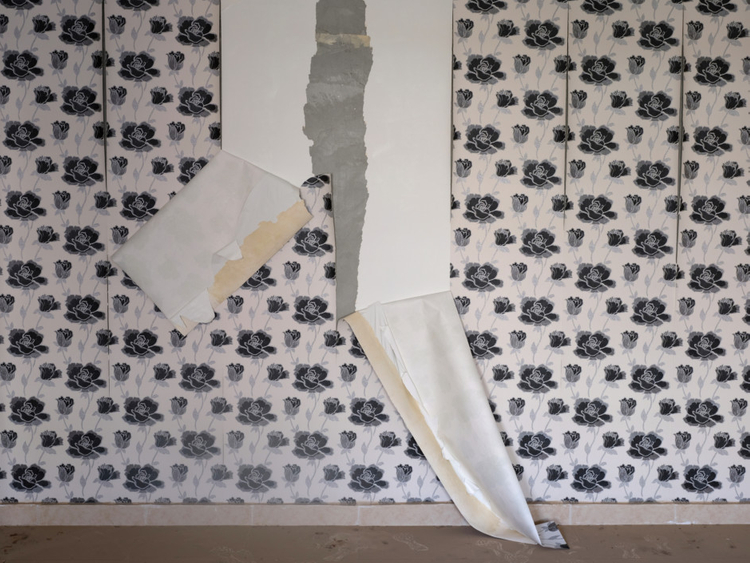
Tarek Al Ghoussein was born in Kuwait, studied photography in the US, and is currently a professor of visual arts at the NYU Abu Dhabi. As a Kuwaiti of Palestinian origin, he is interested in exploring ideas of loss and belonging through his work. He often stages interventions in unknown spaces, combining landscape photography, self-portraiture and performance art to look at how inaccessibility to his homeland has shaped his identity. Al Sawaber, his latest exhibition in Dubai, is not as personal as his previous work, but it is also an exploration of the idea of home, belonging and transience.
The show’s title refers to an abandoned government housing complex in Kuwait that is marked for demolition. Since 2013, when the residents of this complex were asked to leave at short notice, Al Ghoussein has visited the place numerous times, taking photographs of the interiors of the empty apartments and the personal objects left behind by the occupants. His photographs and collection of objects tell stories about how people live and how they transform a space into a home that reflects their identity. The show asks questions about our idea of home and belonging as well as the role and importance of urban architecture in making people feel at home in ever expanding cities.
Al Ghoussein’s choice of this location is significant for various reasons. The Al Sawaber complex is one of the few government funded high density housing projects in the region, and an early example of modernist urban architecture here. It was designed in 1977 by Canadian architect Arthur Erikson (who also designed the Etisalat buildings in the UAE), but failed to fulfill the idea of home of its intended inhabitants. Since the complex is slated to be demolished, this artistic project also becomes an important documentation of the recent past.
Erikson’s original plan of a series of stepped housing blocks with open green spaces between the buildings was not fully realised, and only 524 of the proposed 900 apartments were built. The Kuwaitis who initially lived there found the facilities inadequate for the needs of their families and moved out. They were replaced by expatriates of various nationalities, who brought their own histories, beliefs, cultural elements and way of living with them.
Abandoned buildings
Although most of the residents have vacated their homes, the complex is yet to be demolished. The abandoned, dilapidated buildings stand as silent reminders of the past, filled with memories and memorabilia of hundreds of lives. Al Ghoussein’s forays into this time capsule have yielded many stories about the lives, dreams and desires of the people who once called this place home. His photographs convey how the unknown occupants had personalised their identical apartments to express their individuality and to feel at home in a foreign land.
Interestingly, the photographs show that many of the homes had wallpaper with floral patterns or walls covered with picturesque landscapes of forests and fairytale castles in bright colours. An electrical outlet between the trees, or peeling paint between the flowers, is often the only indication that these are photographs of an interior. Perhaps this desire of the residents to bring vast natural vistas into their homes was a reaction to the restricted interior space and the limited outdoor space of small covered balconies in the apartments.
The objects Al Ghoussein has collected from the apartments are also part of the show. They include posters featuring Asian and Western leaders, and flags that offer clues to the nationality of the occupants, as well as pictures and icons that indicate the religious backgrounds of the members of this multicultural community.
There is also an assortment of expected and unexpected objects such as stuffed toys, a soccer ball, a prayer mat, an army cap, a pregnant Barbie doll, comics, shoes, a keyboard with keys still hanging on the hooks, a fax machine, old photographic films and music cassettes, school books, trophies, airline tickets, a size sticker from a pair of trousers, medical records, heaps of shredded paper, and even some old photographs.
These discarded belongings provide an intimate idea about the lives of the residents of Al Sawaber. They also compel viewers to think about the things that make their house a home, the things that they would not part with, the things they would leave behind if they had to move, and what their belongings say about them.
Long after Al Sawaber is demolished, Al Ghoussein’s photographs and collection of objects will remain as a record of the past, providing a rare insight into the lives of the people for whom this was a transient home, and who have left their trace in it.
Al Sawaber will run at The Third Line, Alserkal Avenue, Al Quoz, until January 20.















